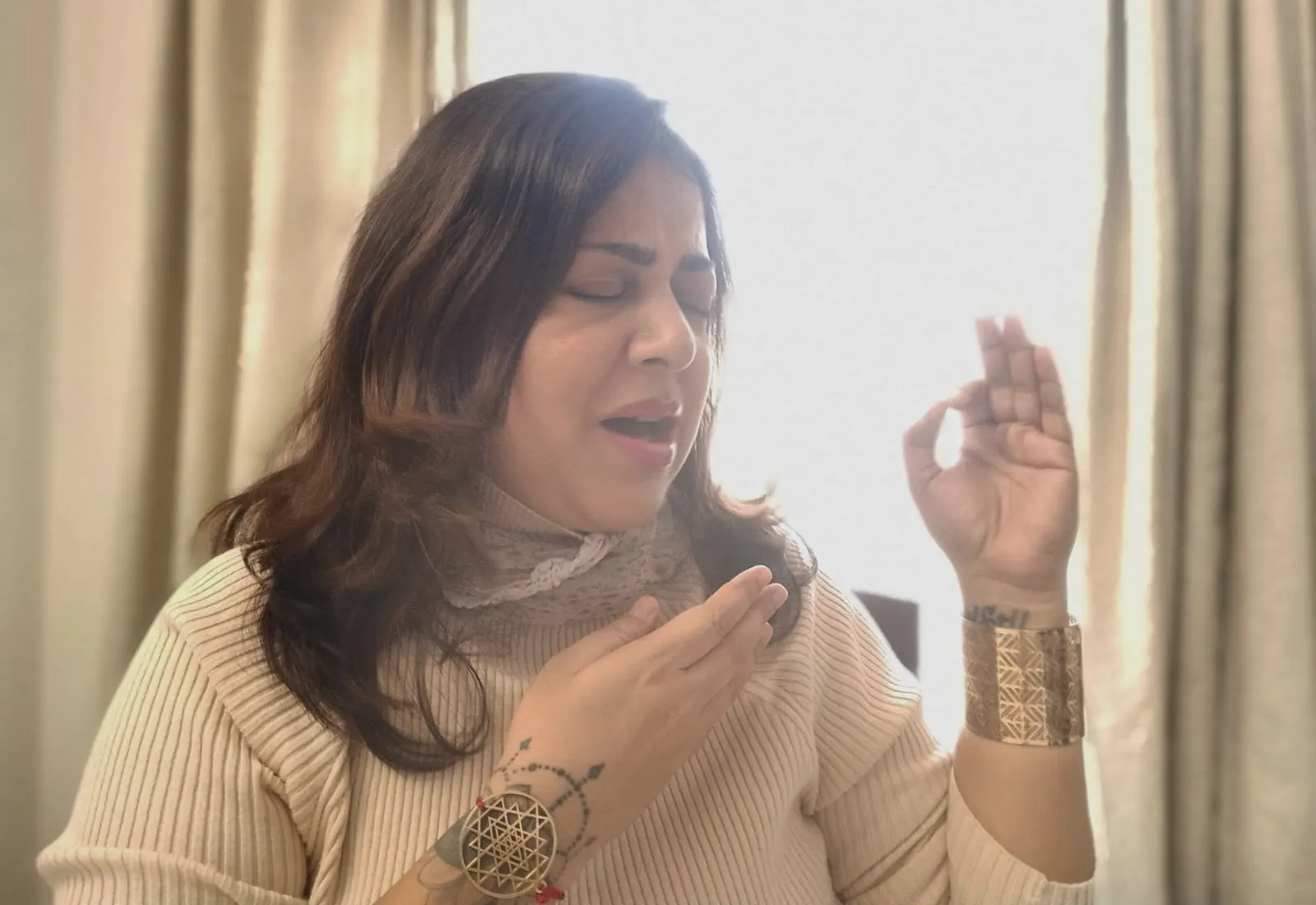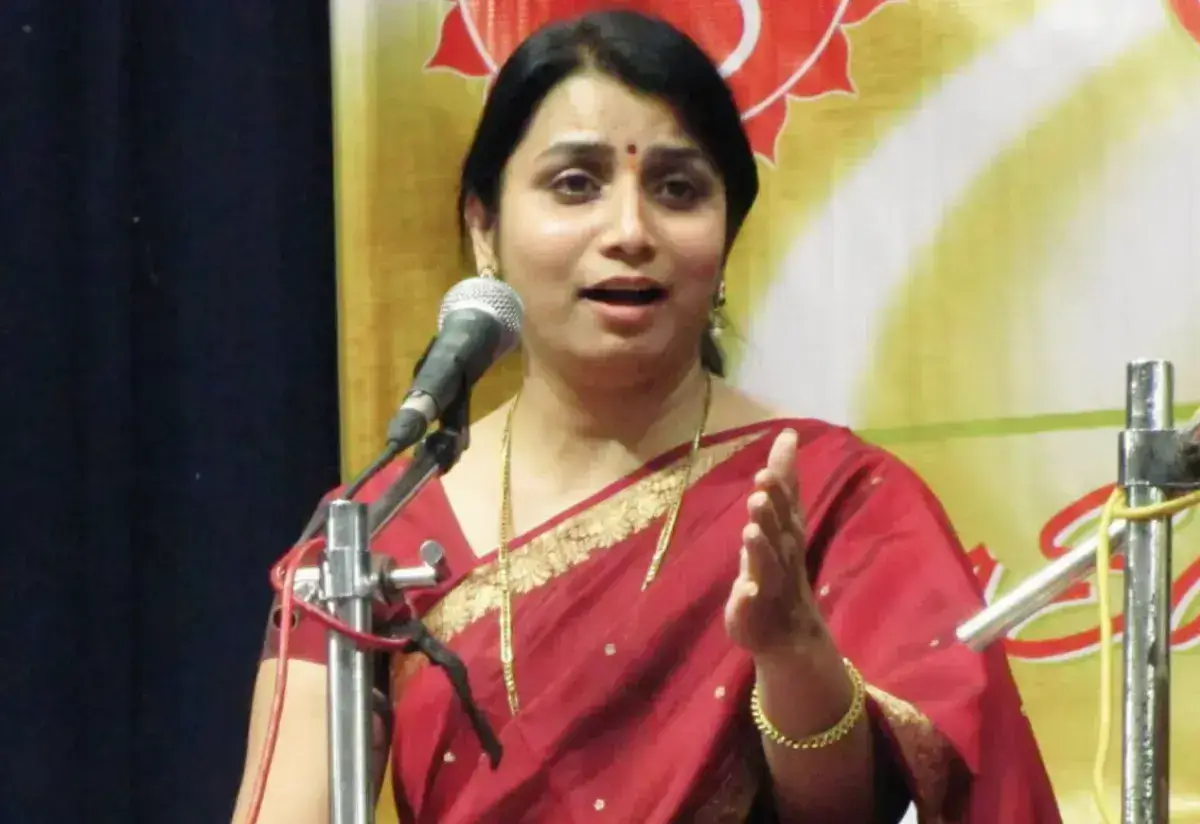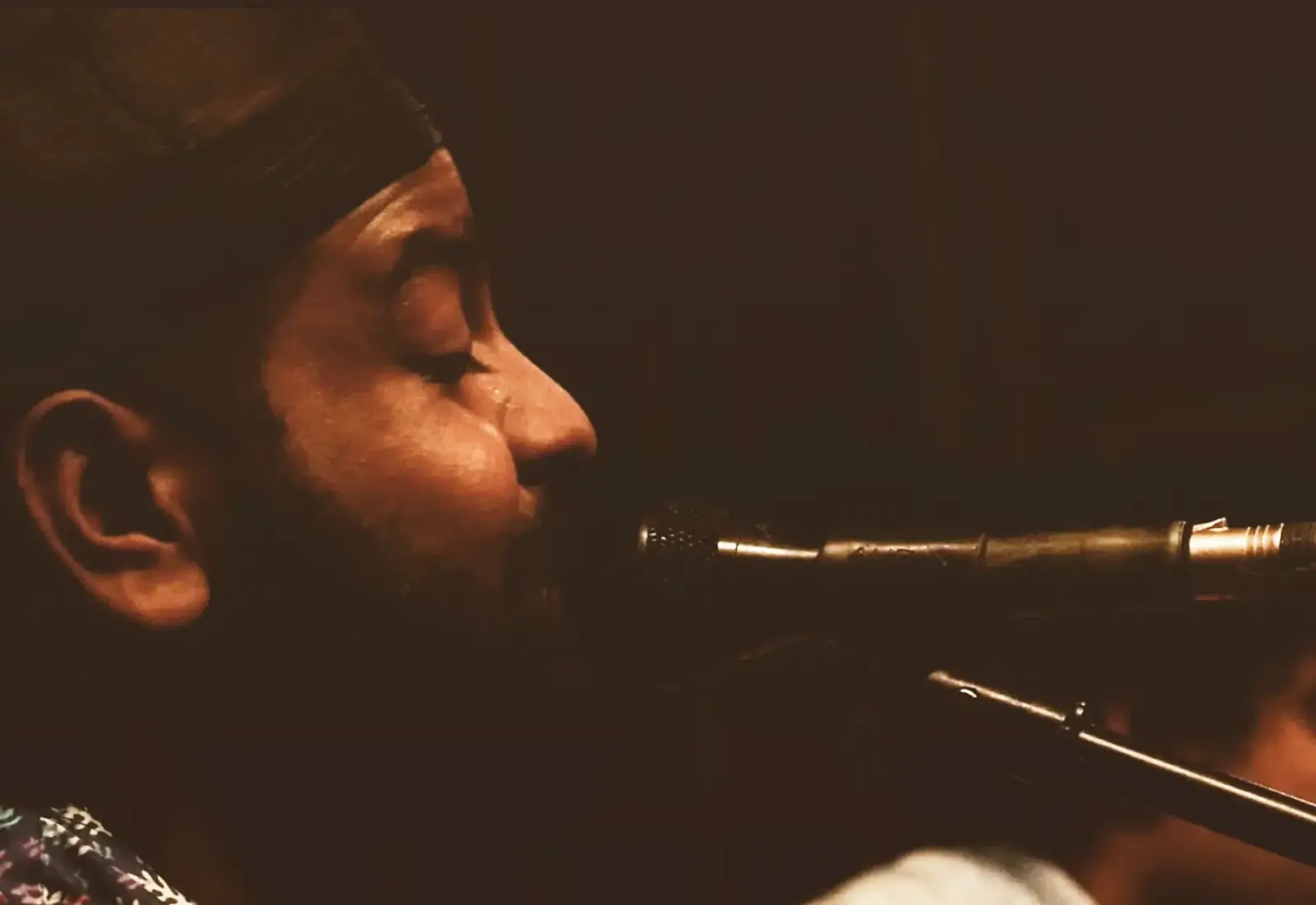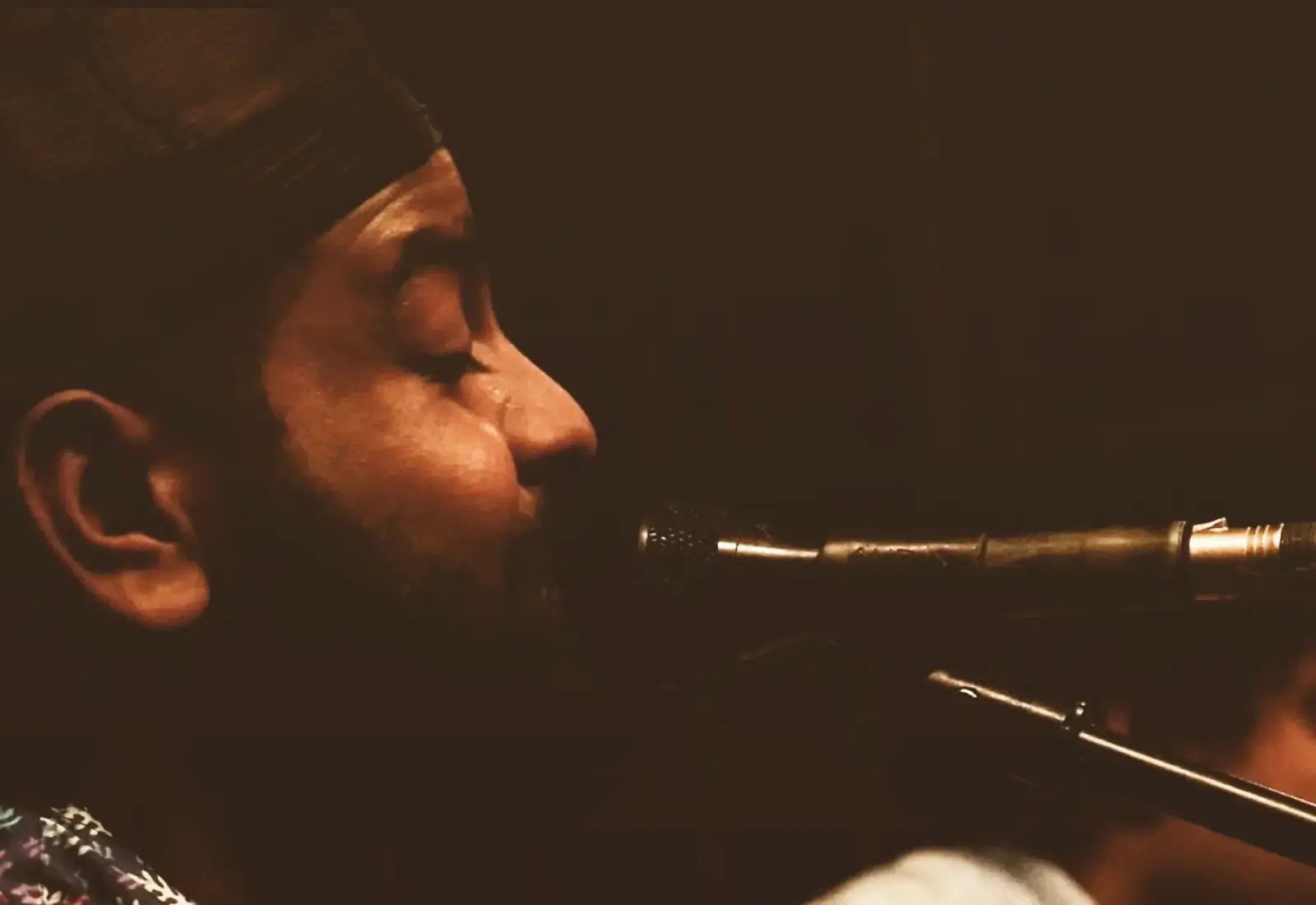Musical Notes: Symbols, Types, Origin & Evolution
The mention of musical notes brings back one of my fondest childhood memories. And it’s none other than Julie Andrews’ voice in the 1965 Hollywood blockbuster - The Sound of Music.
And it goes like this -
“Let’s start at the very beginning.
A very good place to start.
When you read you begin with -
A B C (chorus)
When you sing you begin with Do Re Mi
Do Re Mi (chorus)
Do Re Mi
The first three notes just happened to be
Do Re Mi
Do Re Mi Fa So La Ti
Oh! let’s see if I can make it easier.
Doe a deer, a female deer…”
Easier! Well, that’s what Julie Andrews said to the Von Trapp kids But, here in this blog, we are going to take a deeper dive into the world of musical notes and musical notes symbols.
So let’s get started with it.
What are musical notes?
Musical notes, with their distinct pitches and durations, are the soul of melody and harmony. They are the anchors that guide the musicians’ hands and the singers’ voices to create melodies that resonate in our hearts. Whether it's the haunting allure of a minor key or the joyous jubilation of a major scale, notes are the threads that weave the fabric of the musical narrative.
A musical sound with its exact vibration, pitch, and duration is represented with the help of a note. Musical notes are typically represented by symbols on a musical staff, which consists of five horizontal lines and four spaces. The placement of a note on the staff indicates its pitch, while the shape and type of the note symbol indicate its duration or how long the note should be held. Combining these elements allows musicians to accurately read and interpret a piece of music.
The sequence of syllables "do, re, mi, fa, so, la, ti" represents the solfège system, which is a method used to teach and learn music and sight-singing. These syllables are used to represent the different notes of the major scale, and they provide a way to reference and practice singing or identifying pitches. Here's how they correspond to the notes of a major scale in the key of C:
- Do: C
- Re: D
- Mi: E
- Fa: F
- So: G
- La: A
- Ti: B
This system is particularly useful for vocal training and aural skills development, as it provides a simple and memorable way to refer to specific pitches within a scale. It is often used in music education to help students develop their ears for recognizing and singing different notes.
Origin and Evolution of Musical Notes
Its first mention of musical notes was found in the works of the 6th-century philosopher - Boethius - "De institutione musica" (The Fundamentals of Music). He used 14 Latin alphabets and some signs used in Gregorian chants called Neumes to create one of the earliest notation systems known to us called the Boethian notation.
Boethian notation, while rudimentary by contemporary standards, played a crucial role in the early development of Western music notation. Over time, it evolved and became more precise, eventually leading to the highly sophisticated notation systems used by composers and musicians today.
The next milestone was achieved in the 11th century when Guido d'Arezzo, an Italian Benedictine monk, introduced the staff, to a set of horizontal lines used to represent pitch. Guido's "Ut queant laxis" hymn led to the development of solfège syllables. The first syllables of each line in this hymn—Ut, Re, Mi, Fa, Sol, La—served as the basis for the solfège syllables we use today.
The first syllables of each line in this hymn—Ut, Re, Mi, Fa, Sol, La—served as the basis for the solfège syllables we use today. Over time, the syllable "Ut" from Guido's system was replaced with "Do" for ease of singing, pronunciation, and mnemonic purposes. The full set of syllables became "Do, Re, Mi, Fa, Sol, La, Si (or Ti), Do."
With relentless contributions to capture every little nuance of music, the music notation system has evolved over the ages. At present, the most accepted and relevant music notation systems include - Helmholtz pitch notation and scientific pitch notation system.
More on Helmholtz Pitch Notation
Helmholtz pitch notation, named after the German physicist and music theorist Hermann von Helmholtz (1821-1894), is a system of musical notation used to represent the pitch of musical sounds. Unlike the more common system of note names, such as A, B, C, D, E, F, and G,
Helmholtz pitch notation marks a significant milestone in the evolution of music notations as it employs a combination of letters and additional symbols to indicate the pitch of a note more precisely.
Some unique features of the Helmholtz pitch notation include -
It uses lowercase and uppercase letters to denote octaves. Lowercase letters "c" through "b" represent the notes C4 (middle C) through B4 in the fourth octave. Uppercase letters "C" through "B" represent the notes one octave lower, in the third octave.
Like in standard notation, accidentals (sharps and flats) are used to represent alterations in pitch. They appear after the note name. For example, "C#" indicates C sharp, while "F♭" represents F flat.
An apostrophe ('), also known as an octave indicator, is used to indicate the register or octave of a note. One apostrophe represents the note in the octave directly above, while two apostrophes represent the note in the second octave above. For example, "g'" represents G5, which is one octave above G4.
Natural notes (without accidentals) are notated without a specific symbol. For example, "D" indicates the note D in the fourth octave.
More on the Scientific Notation System
The scientific notation system, also known as scientific pitch notation or scientific pitch, is a method of representing musical notes and their frequencies in a precise and standardized manner. It is commonly used in scientific and acoustical contexts for its accuracy and clarity. In this system, each note is associated with a specific frequency, and the notation is consistent across all octaves.
Key features of the scientific notation system include:
International Standardization: Scientific pitch notation is internationally standardized, making it a universal system for representing musical pitches. It provides an unambiguous way to specify the pitch of a note.
Middle C Reference: The system establishes a reference point at middle C (C4) with a frequency of 261.63 Hz. This reference note simplifies the notation of all other pitches and their frequencies.
Octave Numbering: Octaves are numbered sequentially, beginning with C as the start of each octave. Middle C (C4) is the start of the fourth octave. Each successive C note denotes the start of a new octave.
Sharp and Flat Notation: Accidentals, such as sharps (#) and flats (♭), are used to indicate alterations in pitch. For example, C# represents C sharp, and B♭ represents B flat.
Frequency Reference: In addition to using letter names and accidentals, scientific pitch notation specifies the exact frequency of each note. For example, A4 is notated as A4 = 440 Hz, indicating that A in the fourth octave has a frequency of 440 Hertz.
Comprehensive Range: The system covers a wide range of octaves, from the lowest notes of human hearing (e.g., C0, with a frequency around 16.35 Hz) to the highest ultrasonic frequencies (e.g., C8).
Accuracy in Scientific and Acoustic Studies: Scientific pitch notation is especially valuable in scientific, acoustical, and engineering contexts, where precise frequency measurement is essential. It allows for accurate communication of pitch information in experiments, analyses, and instrument tuning.
Ease of Use: While it may appear complex at first glance, scientific pitch notation provides a consistent and intuitive way to notate pitches, which can be especially helpful for those working with musical acoustics and physics.
Also read - 7 Notes of Indian Music
Relation between the Notes and Scales
The relationship between notes and scales is fundamental to understanding music theory and composition. Notes are the individual pitches that make music, while scales are collections of notes organized in a specific pattern.
Understanding how scales are constructed, how they relate to notes, and how they form the basis of chords and melodies is essential for musicians and composers. Different scales provide a wide range of tonal colors and moods in music, allowing for creativity and expression in composition and performance.
Notes represent specific musical pitches that are derived from the twelve unique notes in the chromatic scale. The basic notes, which include white keys on a piano, are also known as natural notes. Accidentals (sharps and flats) modify the pitch of a natural note.
Scales are collections of notes organized in a specific pattern. These patterns determine the musical character and flavor of a scale. Scales are made up of whole steps and half steps (or tones and semitones). The arrangement of these intervals creates the unique sound of a scale.
Scales often repeat at the octave, meaning the pattern of notes starts over at the next higher or lower pitch level. Common scales include the major scale, natural minor scale, harmonic minor scale, pentatonic scale, and more. Each scale has its unique pattern of whole and half steps.
What are the Symbols for Musical Notes?
In standard Western music notation, musical notes are represented by specific symbols placed on a staff, which consists of five horizontal lines and four spaces. Each symbol indicates both the pitch and the duration of a note. Here are the primary symbols used for musical notes:
Whole Note (Semibreve)

A hollow oval shape with no stem represents a note with the longest duration. In 4/4 time, it typically receives four beats.
Half Note (Minim)
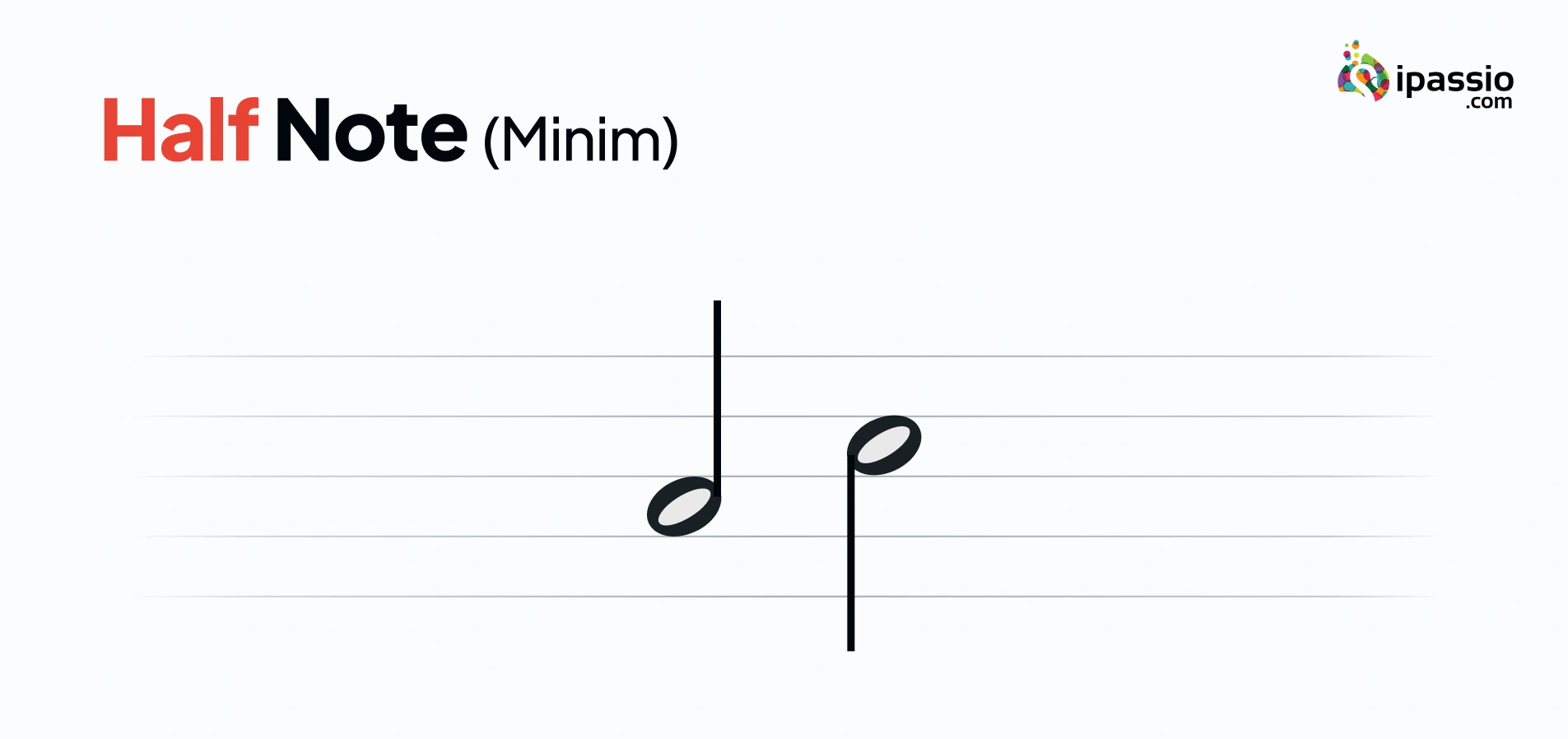
Similar to a whole note but with a stem. It typically receives two beats in 4/4 time.
Quarter Note (Crotchet)

A filled-in oval shape with a stem. It usually represents one beat in 4/4 time.
Eighth Note (Quaver)

Similar to a quarter note, but with a flag attached to the stem. It represents half a beat in 4/4 time.
Sixteenth Note (Semiquaver)

Similar to an eighth note but with two flags attached to the stem. It represents one-quarter of a beat in 4/4 time.
Thirty-Second Note (Demisemiquaver)

Similar to a sixteenth note but with three flags attached to the stem. It represents one-eighth of a beat in 4/4 time.
Sixty-Fourth Note (Hemidemisemiquaver): Similar to a thirty-second note but with four flags attached to the stem. It represents one-sixteenth of a beat in 4/4 time.
These symbols, combined with the placement on the staff and the use of clefs (such as the treble clef or bass clef), provide a comprehensive system for representing both pitch and rhythm in written music. The notes are also modified by accidentals (sharps, flats, and naturals) to indicate changes in pitch when needed. Additionally, notes can be connected by beams or flags to form complex rhythms, and their duration can be extended or shortened by dots and ties. This system of notation allows musicians to interpret and perform a wide range of musical compositions accurately.
Thus, Symbols, such as clefs, time signatures, dynamics, and articulations, provide the roadmap for interpretation. They tell us where to begin when to crescendo, when to pause, and when to let the music soar. These symbols bring life to the page and make a musical score a living, breathing entity.
In the end…
Music notes and symbols are not just dots, lines, and curves on a page; they are the channels of emotion and the bridges that connect hearts and souls through music. They carry the legacy of composers who dared to translate the ineffable into sound and the dreams of performers and students who strive to master this timeless art. Music notes and symbols, like the music they create, are an eternal gift to humanity, a language that transcends boundaries and speaks to the very essence of our existence.
They are the building blocks of expression and communication in music. They serve as the language that unites composers, performers, and listeners, transcending barriers of language and culture. From the gentle sway of a lullaby to the grand crescendo of a symphony, notes, and symbols convey the emotions, stories, and visions of countless composers throughout history.
If you want to learn more about the magic of musical notes and attain mastery over it, explore Online Western Music Lessons.


